Hello Nature readers, would you like to get this Briefing in your inbox free every day? Sign up here.
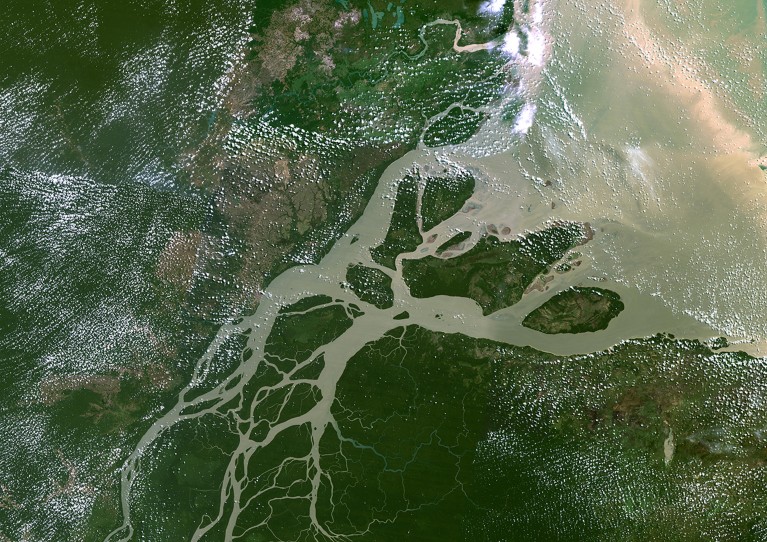
Water flows with great force from the Amazon River into the sea at its mouth.Credit: Universal Images Group North America LLC/Alamy
Brazilian petrochemical company Petrobras wants to drill exploratory oil wells in the ocean near the mouth of the Amazon. Researchers worry that, if the plan gets approved, inevitable oil leaks could damage nearby ecosystems, including a vast reef system and the second-largest mangrove area in the world. Little is known about the reef, so “a comprehensive evaluation of the risks from oil and gas exploitation is currently impossible”, says marine ecologist Rodrigo de Moura.
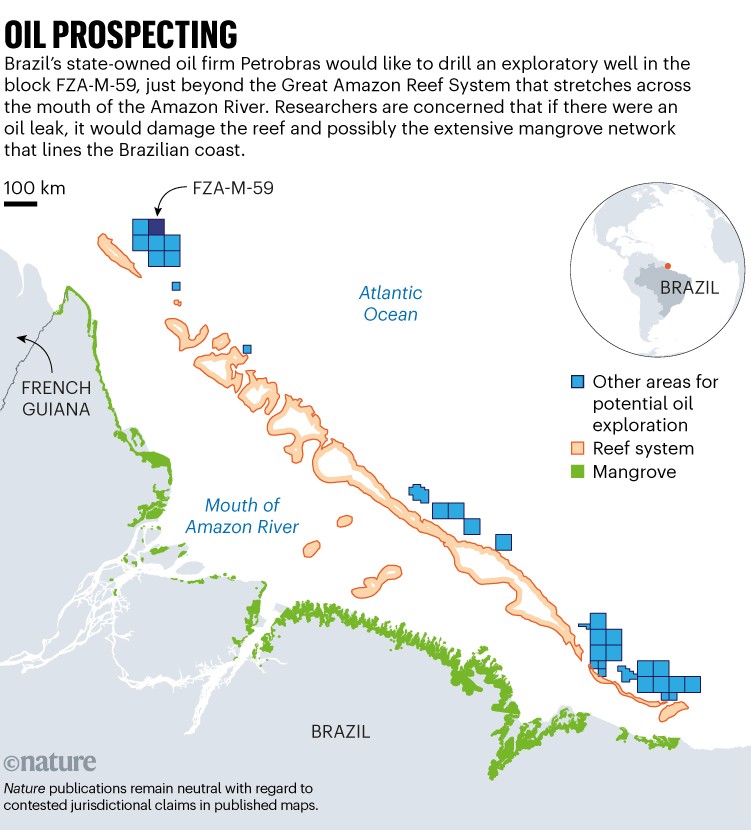
Source: Adapted from L. S. Araujo et al. Mar. Pol. 128, 104465 (2021)
A common variant in one of the HLA immune-system genes is linked with a much higher chance of having no symptoms after SARS-CoV-2 infection. This variant might give an advantage to the immune cells of people who have previously been exposed to ‘seasonal’ coronaviruses, which cause the common cold.
Detailed maps of the cells in human organs show how the placenta commandeers the maternal blood supply, how kidney cells transition from healthy to diseased states and how cells in the intestine organize themselves into distinct neighbourhoods. Each of these atlases comprises hundreds of thousands of data points about gene activity and protein production in individual cells, which are then mapped to their specific location in the organ. “These cells organize themselves into neighbourhoods, towns, countries,” says Michael Snyder, a geneticist and co-author of the study looking at the intestine. “And it affects their function.”
References: Nature paper 1 & paper 2 & paper 3
Neuroscientist Marc Tessier-Lavigne says he will resign as president of Stanford University in California after a review found problems with research produced by his laboratory — although he did not personally engage in research misconduct and was not aware of it at the time. “With the knowledge I have now, it is clear that the issues with these five papers [of which I am a principal author] require me to retract the trio of papers and correct the other two,” said Tessier-Lavigne.
The New York Times | 7 min read
Infographic of the week
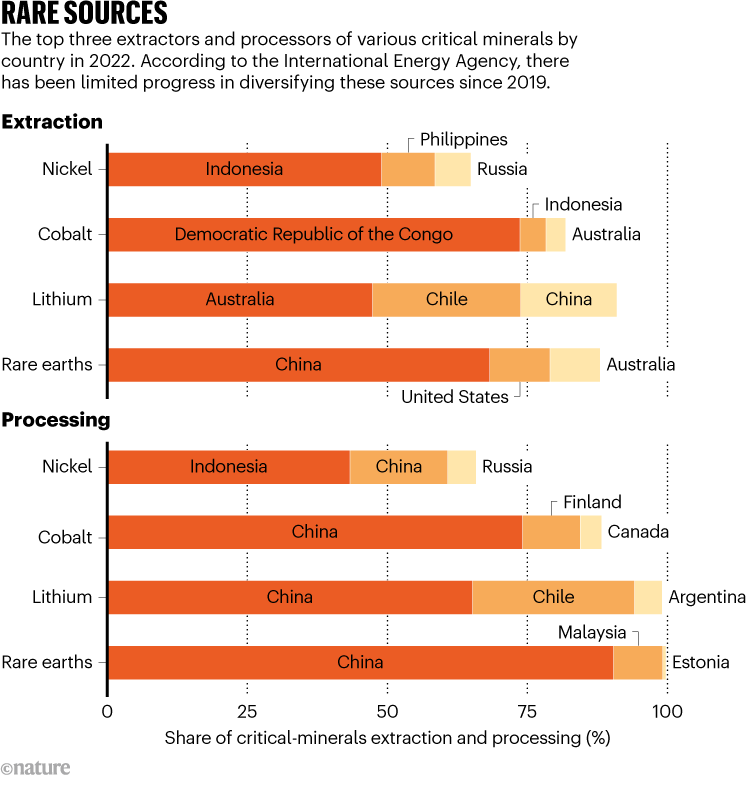
Source: International Energy Agency
Unlike with fossil fuels, one country — China — has become the world leader in refining and processing rare-earth metals that are crucial for the clean-energy transition. The singular exception is Indonesia, which, along with China, dominates nickel processing. China’s ascendancy is the result of forward thinking by the country’s leadership. But it would be unwise for the rest of the world to rely on just one country for the processing of essential minerals, argues a Nature editorial. As other countries build their home-grown mining, refining and processing capacity, they should put cooperation front and centre. (Nature | 5 min read) (Source: International Energy Agency)
Features & opinion
The first vaccine for malaria, RTS,S, is being rolled out to children in a handful of countries in Africa, with more to benefit soon. It’s a ray of hope for a tenacious and deadly disease: it kills more than half a million people every year, and mortality rates have hardly changed since 2015. There are signs that drugs based on artemisinin, which are among the world’s best weapons against the disease, are losing their effectiveness. And climate change could help malaria to spread to new parts of the world. But researchers are fighting back. The next frontier could be even better vaccines that tackle the parasite at every stage of its life cycle. Monoclonal antibodies could offer another route to protection. And there is the possibility of suppressing or replacing mosquito populations using a gene drive — although the approach is controversial.
Start with this introduction (4 min read) or peruse the whole collection
This article is part of Nature Outlook: Malaria, an editorially independent supplement produced with financial support from Ehime University Proteo-Science Centre, Medicines for Marlaria Venture, Nagasaki University and Malaria No More Japan.
At the University Rover Challenge in May, the Monash University team from Australia placed second for the second consecutive year. Beyond its engineering prowess, the team was notable for another reason: roughly half its leaders were women, in a competition largely dominated by men. The group’s rover is a glaring shade of hot pink, impossible to miss amid a sea of black and silver competitors. “It’s a conversation starter because it’s an antithesis, and it shouldn’t be,” says student roboticist Chloe Chang. “Robotics is fundamentally creative.”
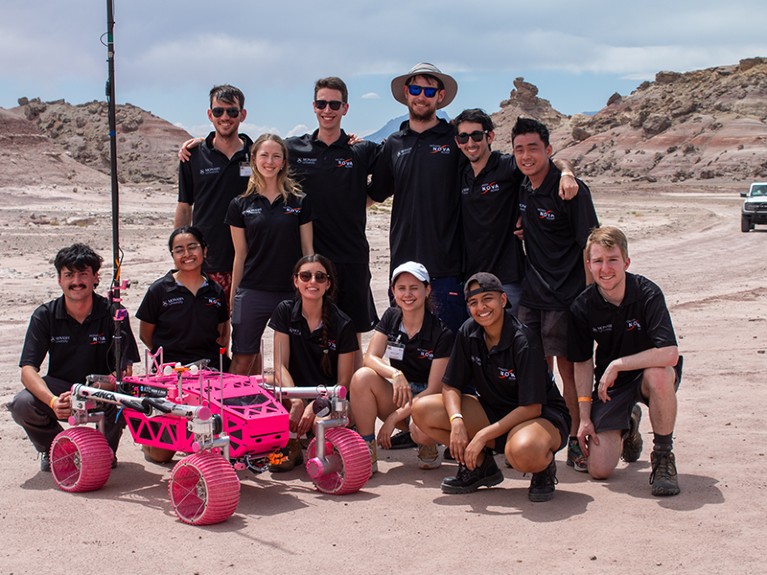
Members of the Monash University rover team pose alongside Waratah, named after an endemic Australian flower.Credit: Amanda Heidt






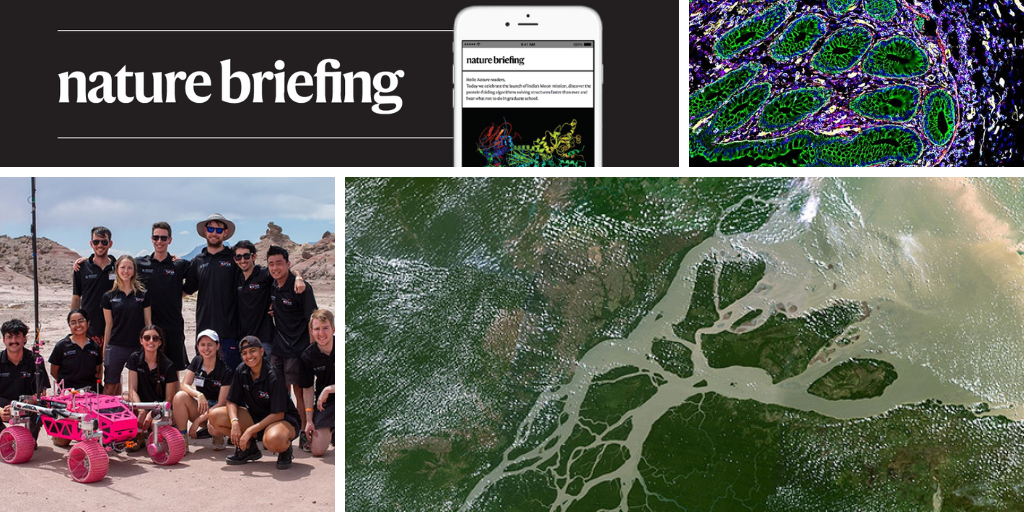
More News
Author Correction: Stepwise activation of a metabotropic glutamate receptor – Nature
Changing rainforest to plantations shifts tropical food webs
Streamlined skull helps foxes take a nosedive